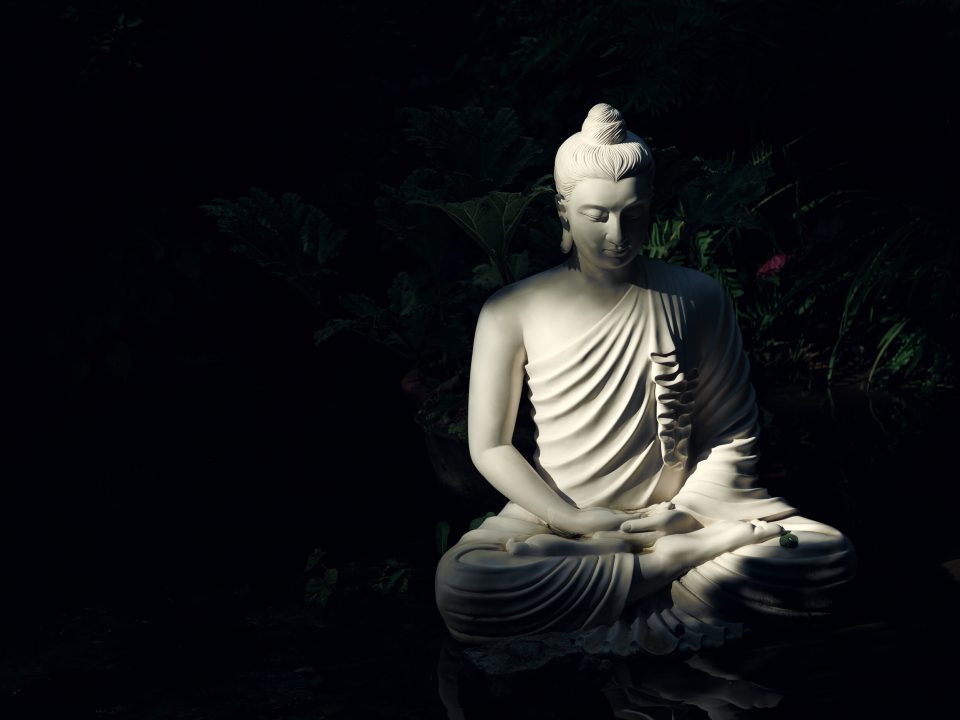Yoga and meditation are rich with symbols that hold deep and often mysterious meanings. However, in many modern yoga classes, these profound aspects are frequently overlooked.
Today, many practitioners use these symbols as a way to express their connection to the practice, and understanding these symbols is essential to fully grasp the underlying principles of yogic philosophy.
In 2024, symbolism remains a powerful tool in yoga, offering a deeper understanding of its teachings and myths. By engaging with these symbols, practitioners can gain fresh perspectives and insights, enriching their practice and connection to the ancient wisdom that yoga embodies.
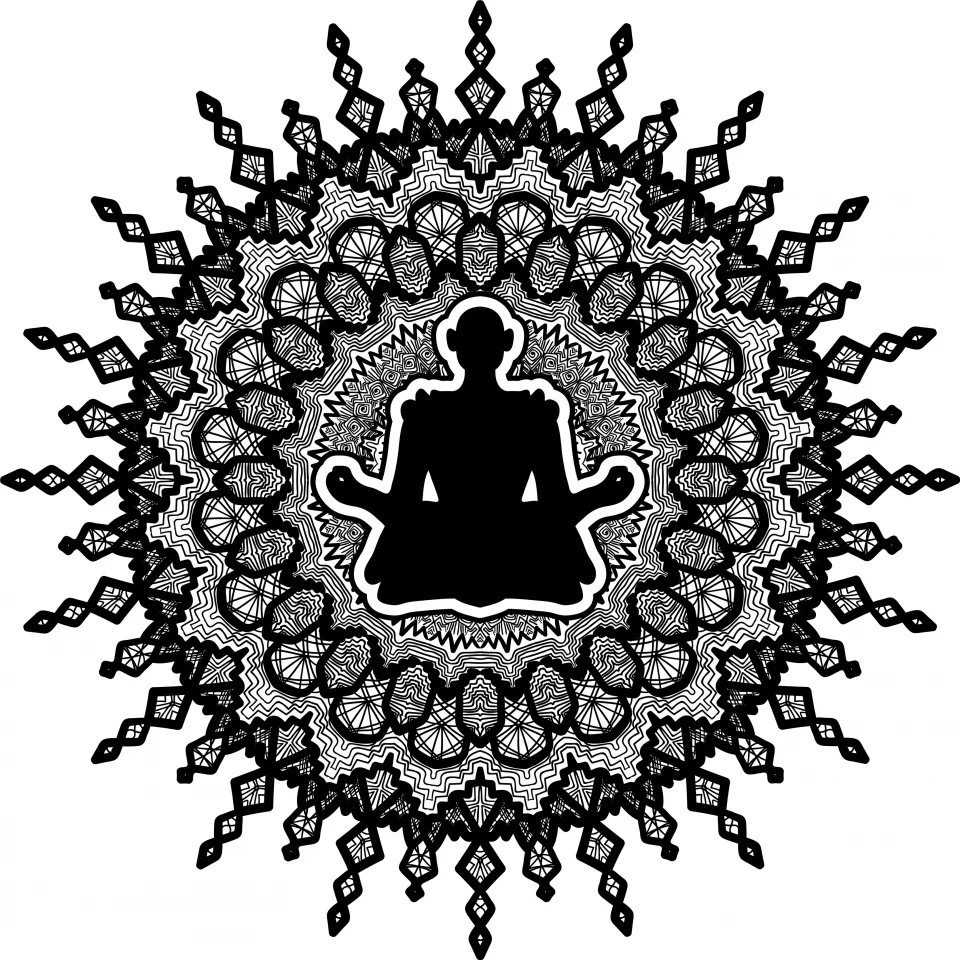
They show a concept, lesson, or spiritual idea through their appearance. But they can also help you concentrate when you meditate. This can put you in a state of deep thought and concentration.
Table of Contents
What are Sanskrit Symbols?
Sanskrit symbols are pictures that show a thought, idea, or relationship. Symbols can also make connections between different ideas and events.
These yoga symbols were created by Indian mystics. They want to make people more aware. And they can help people understand their spiritual path better. So, sharing these deeper truths is important.
Symbols will help you find peace and enlightenment within yourself.
Sanskrit Symbols Used Often in Yoga
There are a number of ways to use Sanskrit Symbols to improve your yoga and meditation. You can have one or more Sanskrit Symbols in your home or place of practice. This will make you feel more inspired and give you more spiritual energy.
Try wearing clothes with Sanskrit Symbols on them.
A lot of people wear jewelry with Sanskrit Symbols on it. If you find something pretty, put it all over your house. Your yoga practice can be better if you have symbols close by. They can also help you focus, find peace inside, and feel divine.
Try putting a Sanskrit Symbol in the room where you practice yoga with a specific goal in mind. This will be a visual reminder to bring you back to your goal. Symbols can also be used as a focus when you meditate.
Om/Aum Sanskrit Symbol
This is the Sanskrit Symbol used most often in yoga. Om is the sound or vibration that brings everything in the universe together. People also think that chanting Om and focusing on it during meditation can help open the third eye. So, Om can bring you in touch with the divine force of the universe.
The Om symbol shows that the main goal of yoga is to bring the mind, body, and spirit together.
There are three ways to say “OM” (A-U-M). Each one shows one part of the Hindu god Trimurti. The letter A stands for the creator, Brahma. U stands for Vishnu, who is the sustainer. And M stands for Shiva, who changes things.
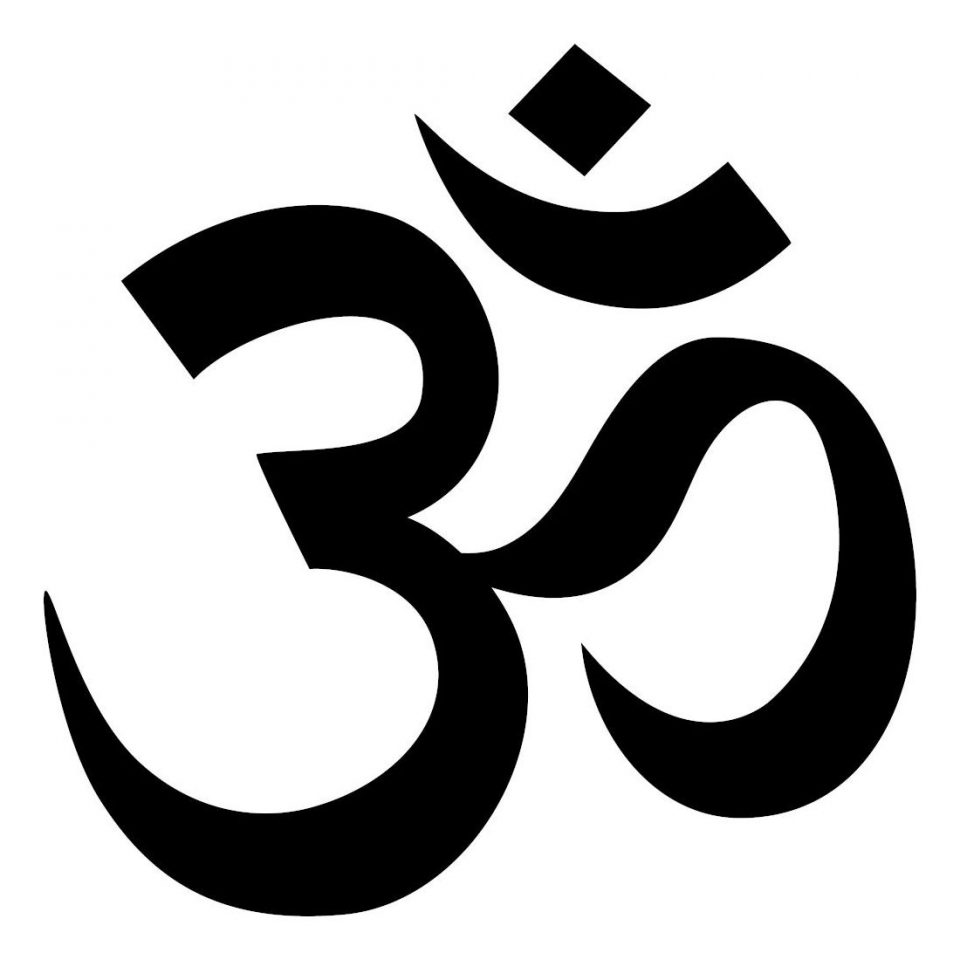
The look and sound of the word “Aum” can be broken down into four different meanings:
- The sound of the A is shown by the bottom-left curve. It is the first state of consciousness, also known as being awake. This is the part of the mind where the 5 senses let us know what’s going on in the world.
- The U sound is shown by the bottom right curve. It is the second state of consciousness, also called dreaming. This is an experience that goes beyond the body. Here, we are in the realms of the active unconscious and energy.
- The sound of the M is shown by the top-left curve. It is the third state of consciousness, also called deep sleep. It stands for the spiritual forces of the universe and the way everything is connected.
- The top dot stands for the silence that comes after chanting “Aum.” It is the fourth pure consciousness samadhi state. This is the most enlightened state of mind. Here, you can be completely still and feel like you are one with everything.
The Lotus Flower
The Water Lily is another name for the Lotus Flower. In many cultures, it is a very important Sanskrit Symbol. In Hindu, Buddhist, and Egyptian cultures, the lotus is a common symbol.
These unique flowers grow out of muddy, dark water. Then, as they grow, they become beautiful and tempting. The way the lotus blooms is what makes it stand out. It grows in dirty water, but the center of its flowers and petals never touch it.
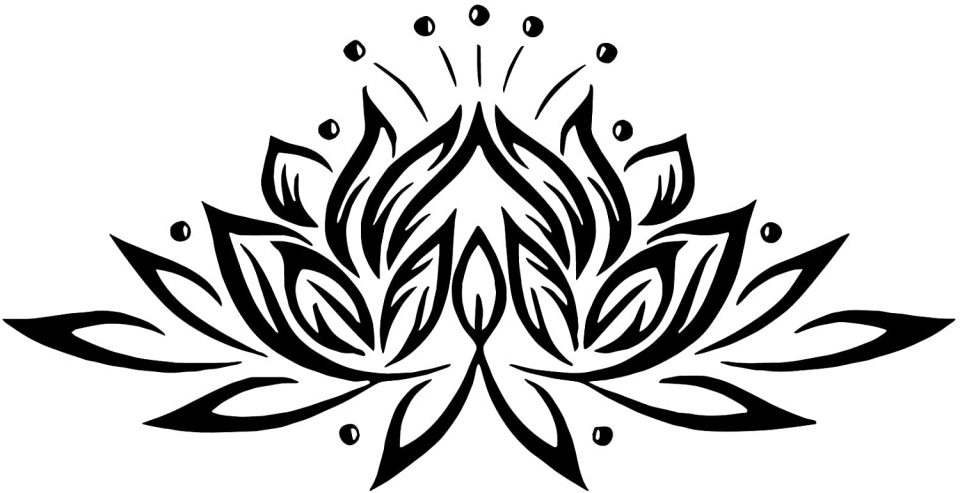
This Sanskrit Symbol shows how people can get through hard times and come out on top.
The lotus is a symbol of beauty in Hindu culture, especially the beauty of a woman’s eyes. It also stands for fertility, wealth, spirituality, and timelessness. The lotus is sometimes given to the Hindu gods as a gift. It is also used in many Ayurvedic treatments.
The lotus is a symbol of purity, spiritual awakening, and loyalty in Buddhist culture. The way the flower blooms is what makes it most about purity.
It is also important what color the lotus is:
- A blue lotus is a symbol of wisdom and common sense.
- A white lotus is a symbol of cleanliness.
- A purple lotus is a sign of the Eight-Fold Path and mysticism.
- The real lotus of the Buddha is shown by a pink lotus.
- A red lotus flower is a sign of the heart.
In Egypt, the lotus is a symbol of life after death. It stands for rebirth and being born again. The Egyptians noticed that the flower goes away at night and comes back the next day. People connect this to the rising and setting of the sun and to life and death.
People say that the Egyptian Book of the Dead has spells and rituals that help you turn into a lotus after you die. People also think of the lotus as a link between northern and southern Egypt. In this way, it shows togetherness.
A lot of different cultures and religions put a lot of value on the lotus flower. But in the end, it represents the spiritual path from darkness to light.
Hamsa
Many different things can be said about this important Sanskrit Symbol. It is often used as jewelry or in paintings and other works of art.
Most of the time, Hamsa means protection from the evil eye. It is supposed to bring health, money, and children.
This graphic is always a hand with an eye in the middle of the palm. Always, the three middle fingers are out. But the thumb and pinky are not the same way and mean different things.
Most cultures use the Hamsa to represent God’s hand. People think it will keep away bad things. All cultures see it as a sign of purity, spiritual awakening, and loyalty.
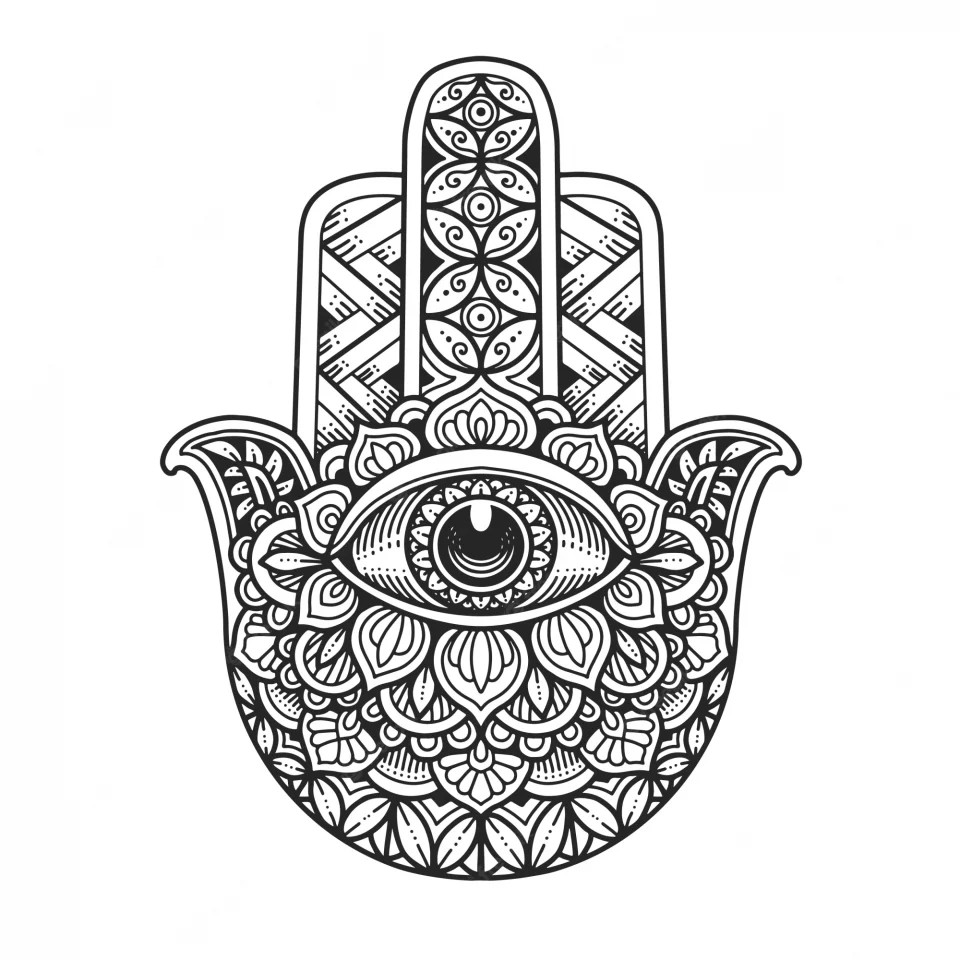
Hamsa is a strong symbol of the number 5 in Jewish culture:
- The 5 books of the Torah are shown by the 5 fingers.
- There are 5 different kinds of sacrifices and gifts. Burnt, sin, trespass, grain, and peace are the five groups.
- The soul of a person also has five parts. There is the physical, the mental, the spiritual, and God.
- Het, the fifth letter of the Hebrew alphabet, is also a holy name of God.
The five fingers represent the chakras in Buddhist and Hindu culture. They also stand for the five elements of nature:
- The water element and the sacral chakra are represented by the pinky finger.
- The thumb stands for the solar plexus and the element of fire.
- The middle finger stands for the throat chakra and the elements of the sky.
- The forefinger stands for the air element and the heart chakra.
- The ring finger is a symbol of the earth element and the root chakra.
Mandala
In Sanskrit, “mandala” means “circle.” It is a direct message to the circle of life, which never ends.
The mandala is supposed to help people on their spiritual journeys.
It is usually used during meditation to show a person the path they should take in life. It can show where they have been and where they are now.
The mandala can be used for meditation in two main ways:
- Use the mandala as a focus piece of art. Follow the lines, shapes, and patterns. This will help you relax and understand where you are going. It will also give you advice about what to do in the future.
- You can draw or color a mandala to make your own. This is good for calming and relaxing.
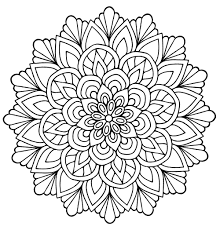
All mandalas are beautiful and interesting to look at. They stand for completeness, unity, and peace. They should always be symmetrical and balanced from the center outward. And they should be interesting all the time. The colors are also chosen for a reason:
- Red means power.
- Pink represents love and femininity.
- Orange means imagination, change, self-awareness, and intuition.
- Yellow means learning, being wise, laughing, and being happy.
- Green means healing, ability, and love of nature.
- Blue means healing of the heart, inner peace, and meditation.
- Anything holy is purple.
- Black means mystery, deep thought, and being unique.
Buddha
The most well-known symbol in the world of yoga is the picture of Buddha. Before he became enlightened, the first Buddha’s name was Siddartha Gautama.
Today, the Buddha sign means that a person has reached “Bodhi.”
They can then help other people find their way spiritually.
Bodhi is the perfect state of being both smart and good. They are sometimes called an enlightened one as well. One who is enlightened knows everything, from the past to the present to the future. This person’s eyes have been opened to the truth. Now, they can look at things with an open mind.
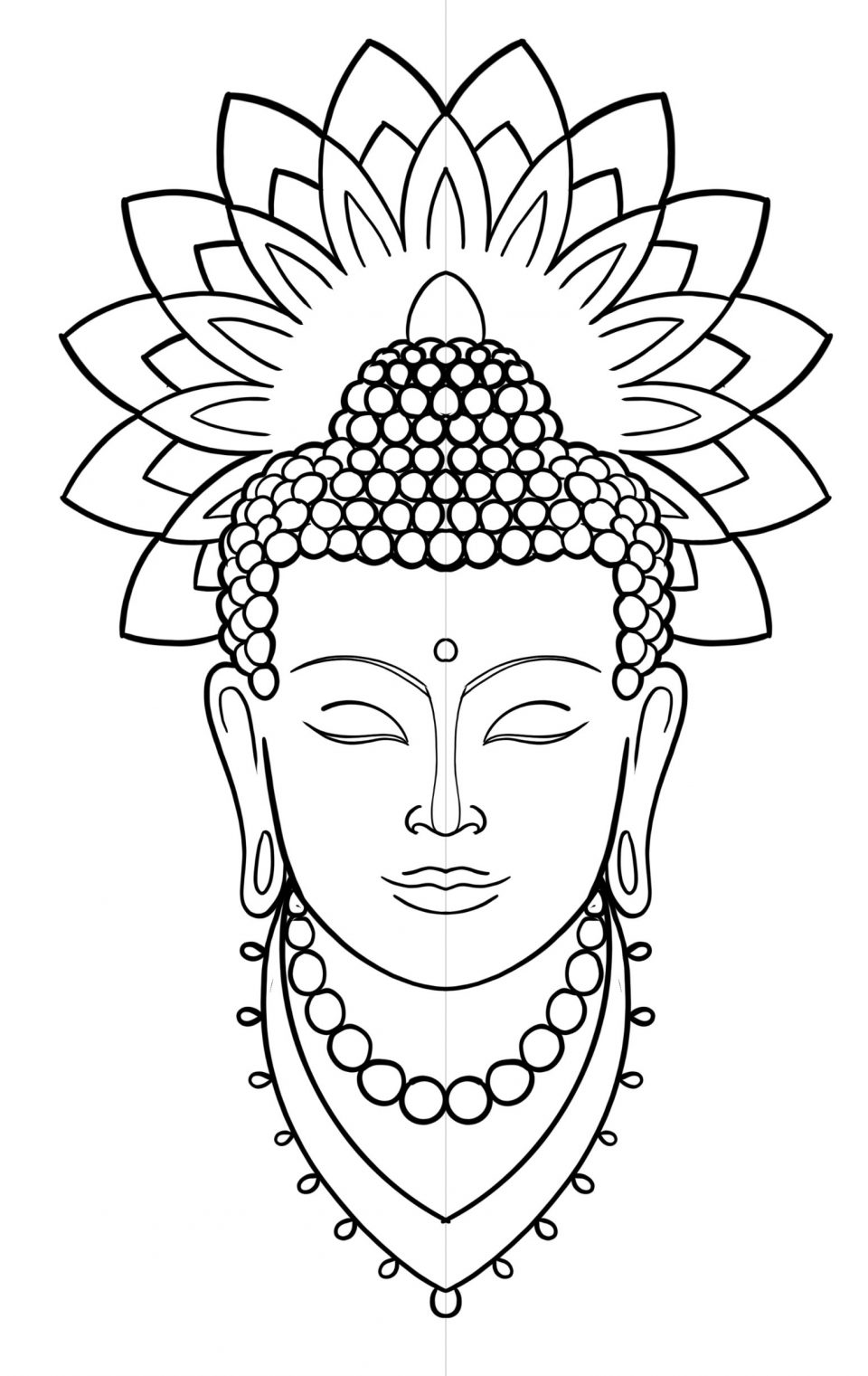
Here are some of the things that make someone a Buddha:
They love all living things, have wisdom and power, are kind, have high morals and self-control, are honest and generous, and are patient. They are hard to get mad at and don’t hurt other people.
The Buddha symbol helps people remember that Buddhism is based on three main ideas. One should not be stupid, should not hate other people, and should not get angry. The symbol also serves as a reminder to keep things in balance.
This is what the Buddha said to his followers for the last time:
“All component things in the world are changeable. They are not lasting. Work hard to gain your salvation.”
Number 108
The number 108 stands for spiritual wholeness and completion. It stands for the beginning of everything. In yogic traditions, it is a very important sign. The number 108 is found in nature, science, and old buildings.
Here are some ways that 108 shows up:
- The distance from the Earth to the Sun is 108 times the Sun’s diameter.
- The distance from the Earth to the Moon is 108 times the Moon’s diameter.
- The Sun is 108 times bigger than Earth in diameter.
- In India, there are 108 holy places.
- The human body has 108 pressure points.
- The heart chakra is made up of 108 energy lines that come together.
- There are 108 different kinds of feelings: 36 from the past, 36 from the present, and 36 from the future.
- Malas or prayer beads are made with 108 beads.
- The Stonehenge is 108 feet in diameter.
- In Belize, the High Temple of Lamanai is 108 feet tall.
- The Guatemalan Tikal Temple is 108 feet high.
- There are 108 different names for Gods in Hinduism.
- Jainism has 108 good things.
- The number 108 is called the Harshad Number. This means that the sum of its numbers can be used to divide it. 1+0+8 = 9, and 108 can be split into 9 parts.
- There are 54 letters in Sanskrit. Each letter has two different forms, one for men and one for women. This adds up to 108.
- There are 108 ways to pray and 108 ways to get to God.
- There are 108 holy books in Tibetan.
Mala Beads
During meditation, mala beads are used like a rosary. In Sanskrit, “mala” translates to meditation garland.
They usually have 108 beads and one bead called the “guru.” Every time, the guru bead is bigger than the others. It represents a spiritual guide.
It is also used to mark the start and end of a meditation session. It can also mean the connection between a spiritual teacher and a student.
The rest of the beads help you keep track of how many times you say a prayer or mantra while you are meditating. Move your hand to the next bead every time you say a mantra.
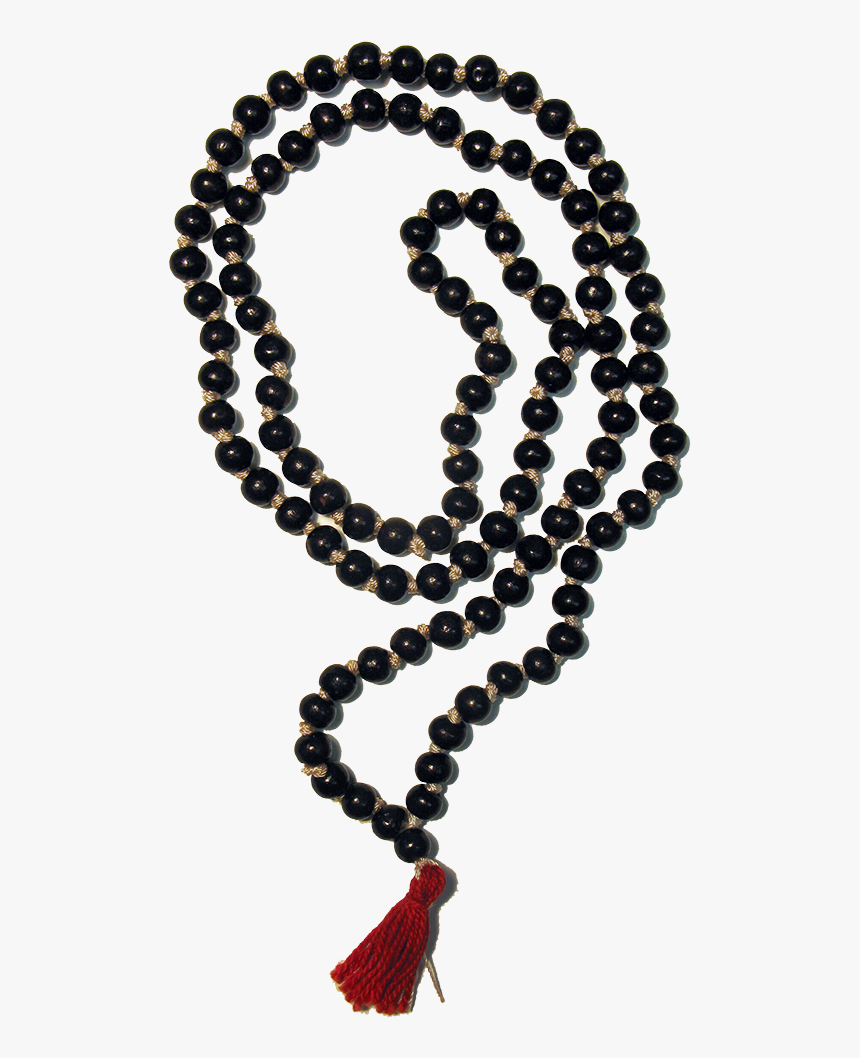
Malas often have a tassel as well. This shows a link to God and to other people.
Malas can be made from a wide range of colors and materials. Each of these words means something different:
- Red Jasper helps you feel stable, organized, creative, empathetic, refreshed, clear-headed, and focused.
- Red Tiger Eye gives you motivation, protection, insight, humility, and confidence.
- Garnet: cleans, energizes, and boosts confidence.
- Rose quartz means truth, harmony, and love that never ends.
- Rhondite: healing, balancing.
- Unakite is stabilizing and grounding.
- Carnelian is a stone of inspiration, courage, vitality, and motivation.
- Amber heals, cleans, gives energy, relieves stress, and heals emotions.
- Goldstone gives off energy and protects
- Citrine means energy and wealth.
- Yellow Malay Jade means wisdom, balance, and perspective.
- Honey Calcite gives you energy, vitality, confidence, strength, and persistence.
- Green Aventurine is a stone of compassion, empathy, patience, success, and decisiveness.
- Moss Agate is good for self-confidence, personal growth, inspiration, and optimism.
- Green jade is soothing and calm.
- Malachite: creativity, confidence, and emotional balance.
- Blue Aventurine: Talking and being creative.
- Blue Tiger Eye is good for relieving stress, getting motivated, staying safe, seeing things clearly, being humble, and having confidence.
- Indian Bloodstone – healing, detoxifying, revitalizing.
- Lapis Lazuli is a stone of inner truth, self-knowledge, and self-expression.
- Amethyst improves memory, motivates, calms, protects, and keeps things in balance.
- Crazy Lace Agate is good for calming, self-acceptance, self-confidence, focusing, and concentrating.
- Sugilite protects and gets rid of bad relationships.
- Smoky quartz helps people feel calm and strong while relieving stress.
- Agarwood in black Eaglewood – wakes up, cleans, and relaxes
- Obsidian is clear, stable, wise, compassionate, and strong.
- Black Onyx: Protection, strength, luck, vitality, health
- White Howlite is a stone of memory, patience, calm, and positivity.
- Mother of pearl is used to heal, protect, and make things.
- Clear quartz is used to heal and clean.
- Grace, purity, truth, happiness, compassion, and honesty are all traits of a pearl.
- Bodhi Seed: spiritual promise, commitment, faith
- Bayong Wood – stability, spiritually.
- Tiger Eye can help you feel safe, grounded, and confident.
- Brown Agate gives you inner stability, self-confidence, calm, maturity, focus, and insight.
- Tulsi is used to clean and protect.
- Rosewood gives you safety.
Ganesh
The head of an elephant is always used to show this Hindu god. The first chakra is connected to it. It is also called Lord of Beginnings and Lord of Good Fortune.
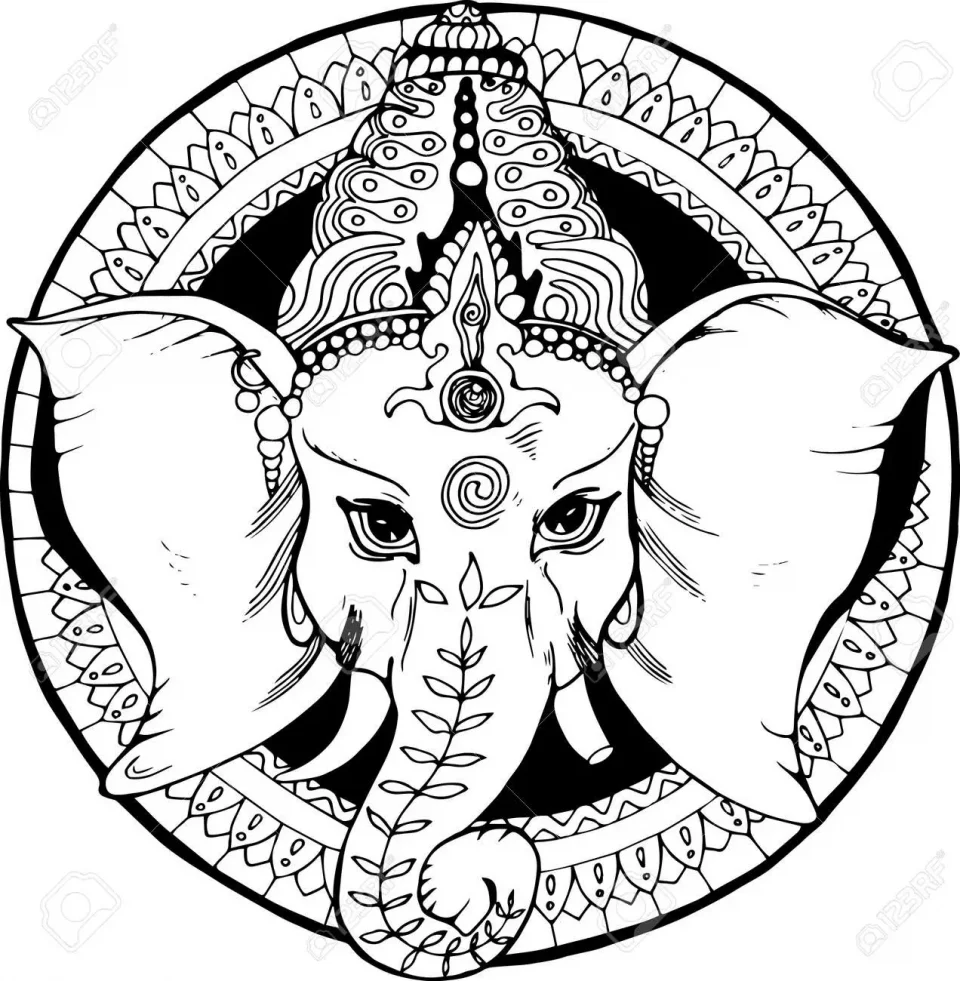
This sign brings wealth, good luck, and success. It gets rid of both spiritual and physical problems.
Each part of the symbol means something:
- The big elephant head is a reminder to think big. It stands for knowledge and wisdom.
- The small eyes remind us to keep our minds on what’s important and to enjoy the little things in life.
- The small mouth is a reminder to talk less and enjoy quiet.
- We listen more because of the big ears.
- The trunk is a symbol of being flexible and able to change.
- Most of the time, it is shown with only one tusk. This helps us remember the good things and let go of the bad ones.
Namaste
Namaste is often said at the start or end of a yoga class. It means “the light in me honors and acknowledges the light in you.” In this case, “light” refers to the soul or God.
To say this is to recognize and share the spiritual and yogic journey of the person saying it.
To say “namaste” as a greeting, put your palms together in the middle of your chest and bow. This shows respect, connection, and gratitude. Also, it stands for the heart chakra. The third eye chakra is represented by putting your palms on your forehead.
At the very least, namaste is an acknowledgment that we are all the same.
Sanskrit Tattoos
There are many spiritual meanings in the Sanskrit text. When people get a Sanskrit tattoo, the words are usually names or “power words.” When it comes to Sanskrit tattoos and power words, the words that are spelled out are usually good ones. Some examples of power words are happiness, dependable, truth, and focus. A lot of Sanskrit tattoos are made with very bright colors. Because the patterns on these symbols are so complicated, they create an illusion that is very pleasing to the eye.
Phrases in Sanskirt
Sanskrit tattoos can have symbols like flowers and birds, but they are also often written in the language itself with phrases that mean something to the person getting the tattoo.
“Never Broken” is a Sanskrit phrase that reminds the person that life has been hard and that even though they have been knocked down, they always get back up stronger than before, never giving up.
Another phrase that can be written in Sanskrit is “Live and Die Without Regret.” This just means to make the most of your life. It’s a reminder to the person who has the tattoo to always go for that chance or opportunity. When you get close to the end of your life, you want to be able to look back and say, “I’m glad I did that,” not “I wish I had done that.”
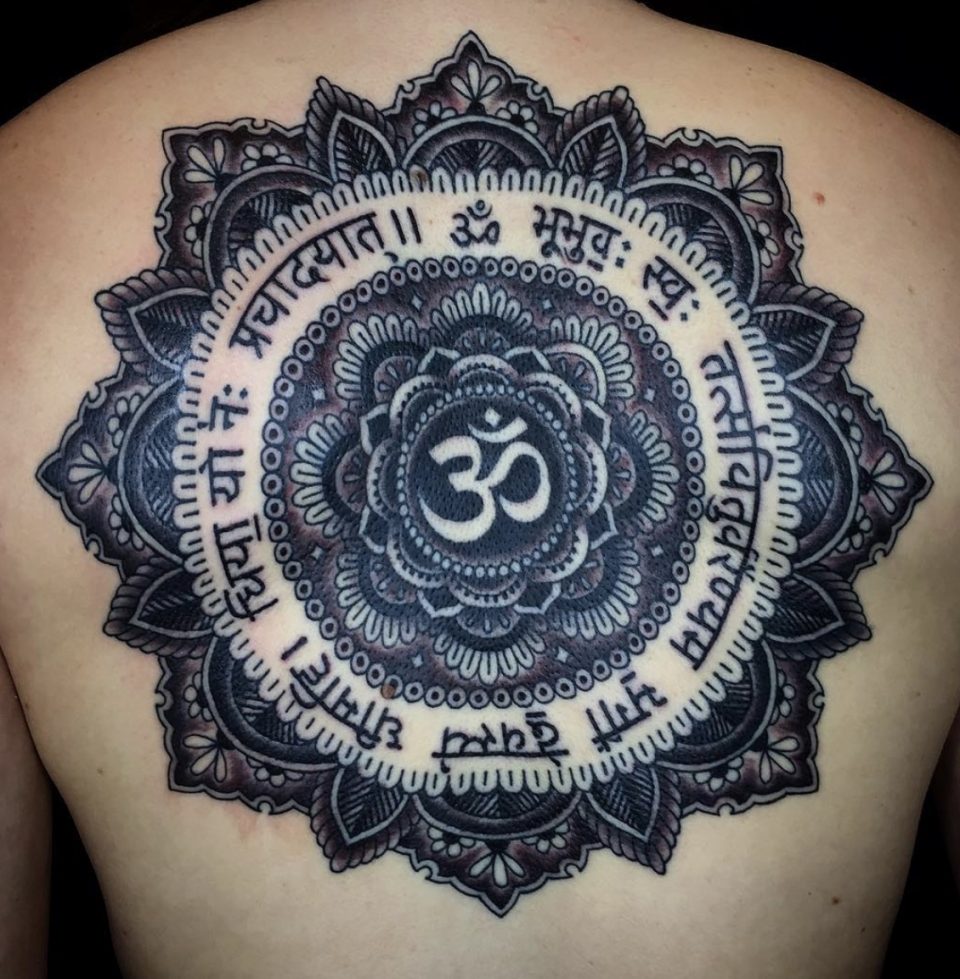
“God is watching my back” is a phrase that spiritual and religious people believe very strongly in. This tattoo means that you have some kind of guardian angel looking out for you and that God will keep you safe. When someone looks at this tattoo, it can make them feel strong.
Since Sanskrit is a language that died out hundreds of years ago, not many people can read it today. Knowing what these characters mean feels like a secret. It reminds the person that they have nothing to worry about because someone, like God, is watching out for them. Since the phrase includes the words “watching my back,” people often get this tattoo on their back.
